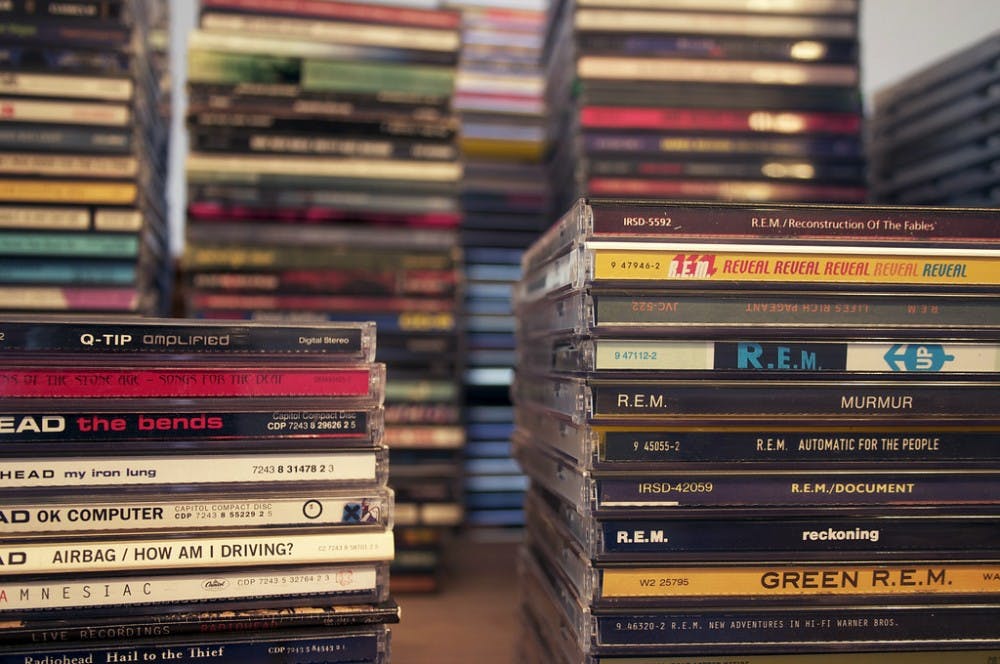It is 2008 and I carry a copy of Taylor Swift's "Fearless" album in the front pocket of my suede leopard–print backpack. Pulling it out between history lessons and rocket math races, my friends and I pore over the lyric sheet as if preparing for the biggest tests of our lives. In a life characterized by experiences, there is no milestone similar to that of receiving your first album.
Tinted with nostalgia, we look back on that crystallized moment as a gateway to our music taste, a trademark of our personality, a trope of our emotional outlet. To receive a musical body of work in its entirety served as our introduction to the world that is curating your sense of self via songs and artists. Being gifted old records from your parents or CDs at your fifth grade birthday party was the most sincere form of love; using a fraction of your first paycheck to buy an album on iTunes was a rite of passage.
This rite of passage may be coming to a close. It is no secret that digital access to music has taken over the majority of listeners with its promised ease and financial feasibility. Having a monthly subscription to streaming services such as Apple Music or Spotify enables listeners to listen to virtually almost all music. Logically, this provides the opportunity to sample songs and build playlists without having to dig through albums for hidden gems as we once did.
With Spotify’s Discover Weekly feature, your music taste turns algorithmic, gifted in a personalized playlist with songs you may like each week. We once asked for iTunes gift cards as birthday presents to purchase that upcoming album we pined after—with an Apple Music subscription, you can download it into your iCloud instantaneously. So what does this mean?
Perhaps there is no longer a need for the tangibility of music to play in your car or in your room in the age of Bluetooth and smart devices. The first half of 2018 brought with it a 25.8 percent decrease in stateside album sales, according to the Recording Industry Association of America—with the CD witnessing the harsher end of this statistic. This trend comes to no surprise as one would much rather pay monthly than per project, despite how much they want to support an artist.
The drop in the value of the album cannot only be accredited to physical sales, it seems. Just as listeners have adapted to digital access to music, so have creators. Often times, artists that are beginning their careers release individual songs little by little, to an audience of virtually everyone who is subscribed to a streaming service. Musicians such as Clairo and Billie Eilish accumulated fame not because of a successful album drop but by building a fan base slowly through a steady stream of singles.
Rather than producing one body of work and constructing it as the central mouthpiece for their brand, artists are beginning to construct their brand before marketing it in its entirety. This has proven to be beneficial, especially for Eilish, who spent her budding years as an artist releasing individual tracks and an EP as she gained traction at a young age. Her long–awaited first album “WHEN WE ALL FALL ASLEEP, WHERE DO WE GO?” debuted—and remained—at the No. 1 spot, the same year she performed at Coachella. Clairo’s lo–fi, low energy “Pretty Girl” gained millions of views on Youtube in 2017, and she only recently announced the release date of her first studio album.
Does this devaluation of the pressing need to create an album necessarily devalue the creative process? It appears to be doing the opposite. The ability for an artist to figure out their sound simultaneously establishes the ability for them to freely produce content that might get picked up by an algorithm or nonchalant listener, and cement its place in their playlists. Whereas the prior need to release a full body of work in an effort to be relevant pushed creators to work against deadlines and scratch abstract ideas, the digital age enables them to explore all avenues before settling on one.
It gives those who are unable to afford professional production the chance to still engage with listeners through services such as SoundCloud and Bandcamp. In turn, it gives listeners the chance to pick apart and define their own tastes and preferences, and invest in a pool of pieces rather than one complete project. When artists do finally decide to produce a full–length body of work, it is not only anticipated but creatively cohesive.
Growing up in this online age of creation may mean that soon, we are no longer going to romanticize receiving our first album, or popping our first CD in the car stereo. But it does mean that there is more content to uncover for ourselves and tastes to define that we did not realize we harbored. It bodes a much larger collection of music to soundtrack our lives to, and to share with others just as we once shared records. It means there is potentially more freedom for both the artist and the audience to emotionally and artistically define themselves—which, at the end of the day, is all we can ask for from music.







